

Google Pixel 9a: boringly good
The simple design of the Google Pixel 9a fits in with the rest of it: it’s pretty average and has no particular strengths or weaknesses. But that’s all a good mobile needs.
The Google Pixel 9a doesn’t stand out much at first glance. But it performs well in the most important areas. For example, it impresses with its long battery life, good camera, and long-lasting update support.
Design and display: the distinguishing feature’s missing
The Google Pixel 9a deviates significantly from Google’s previous design – the camera strip on the back’s completely missing. While it looks stylish without a strip, it’s also generic – almost boring, especially on the black model. It does have one positive, though: the 9a has no camera bump at all on the back, just a thin frame around the two cameras, which makes them less prone to scratches.
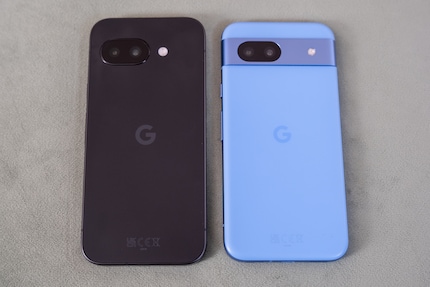
At 15.4 × 7.3 × 0.9 centimetres, the Pixel 9a’s a bit bigger than its predecessor, the Pixel 8a. The display’s noticeably grown from 6.1 inches to 6.3 inches. What’s more, its angular design makes it less comfortable to hold than the Pixel 8a with its rounded corners. Despite its plastic back, the mid-range mobile feels high-quality, but it’s quite vulnerable to fingerprints. The metal frame fits well into the overall look.
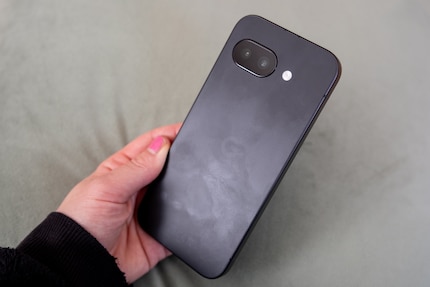
The display also meets high standards. Thanks to the 1080 × 2424 OLED resolution, I get a sharp image with deep blacks and vibrant colours. The refresh rate of 60 to 120 Hz makes scrolling smooth. The brightness is up to 1,800 nits, with a peak of 2,700 nits. This makes the Pixel 9a ideal for bright days and direct sunlight.
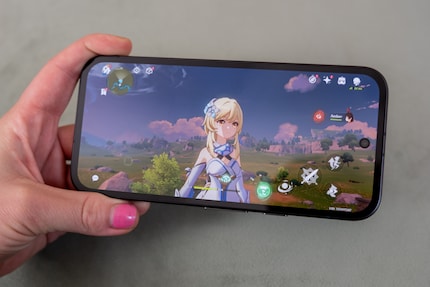
Like its predecessor, Google’s allowed itself a comparatively wide black bezel around the display. It doesn’t bother me one bit.
Hardware: strong 17 hours of battery life
The hardware’s changed very little compared to the Pixel 8a. Interestingly, Google’s installed an optical fingerprint sensor. The Pixel 9 (Pro) already unlocks with an ultrasonic sensor. This is even faster and more reliable, but the optical one also serves its purpose.
The 9a now has an IP68 rating that can withstand a 1.5-metre plunge into freshwater for 30 minutes. On paper, the new camera seems like a downgrade, with 48 megapixels instead of its predecessor’s 64. However, the aperture’s slightly larger, letting in more light. I’ll show you what this means for the results in the camera section.
Here are the specifications side-by-side:
The eight gigabytes of RAM aren’t exactly generous. Although perfectly adequate for everyday use. If you’re a big fan of Google’s AI features, this could be your downfall. Most of the important functions – such as Gemini, Circle to Search, Pixel Studio, and some AI image editing features – work. However, you can’t access more processing-intensive features, such as Pixel Screenshot, which analyses your screenshots and evaluates them to help you find them more easily.
Otherwise, the Google Tensor G4 gives you a powerful chip, which you can also find in the current flagship model. In the Geekbench 6 benchmark, it performs almost on par with its predecessor, but fares worse than other chips in comparable phones. Here’s the comparison with the Xiaomi 14T Pro, which features a Mediatek Dimensity 9300+:
As Google optimises its devices for its own chips, the Tensor G4 still gets you through everyday life perfectly with the mobile running smoothly. Gaming’s also straightforward. I play Genshin Impact smoothly and with good graphics quality.
The battery capacity’s been increased from 4,492 to 5,100 mAh. It’s supposed to keep the device running for up to 30 hours. In the PCMark program, it manages about 17 hours – a very good result – but the Pixel 8a only manages about 13 hours. The Pixel 9 falls in between at 15 hours. It’s worth noting that Google has installed the Exynos 5300 modem in the Pixel 9a rather than the newer Exynos 5400 modem found in the Pixel 9 series. The older modem’s not as good at network detection, which affects the battery. In reality, the battery life is likely to be shorter.
You can charge the Pixel 9a with up to 23 watts via a power adapter or wirelessly with up to 7.5 watts. 23 watts are an upgrade from the Pixel 8a’s 18 watts. The battery can be fully charged in about 1.5 hours, or up to 80 per cent if desired – the latter’s supposed to make the battery last longer.
Cameras: simply good
There are two cameras on the back: a 48-megapixel wide-angle camera with 8x digital zoom, and a 13-megapixel ultra-wide-angle camera. There are another 13 megapixels on the front for selfies. That sounds disappointing overall, but the photos are still satisfactory. I’m also comparing the results with the Pixel 8a because the wide-angle camera’s changed.
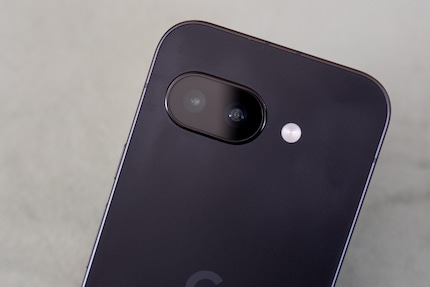
Overall, I like the photos taken with the wide-angle camera. However, the Pixel 8a’s photo has more yellow. I prefer the 9a’s natural colour reproduction.
The Pixel 9a’s zoom’s quite good for a digital camera. I think the 2x zoom’s decent, but the 8x zoom drops in quality dramatically.



What I noticed when comparing the zooms on the 9a and 8a is that the quality deteriorates at 8x zoom on both. However, the 9a retains more detail.
The cameras on the Google Pixels I’ve tested so far take beautiful backlit photos. While this is something you should normally avoid, I like the effect of the bright spots. And the A series doesn’t disappoint: both phones deliver good results, although the reflections are more pronounced on the 9a.
Software: simple and durable
The Google Pixel 9a comes with Android 15. Google’s version is known for its clean, streamlined look. You also always receive the latest updates extremely promptly. System and security updates are available for seven years, which is exceptional for a mid-range device.
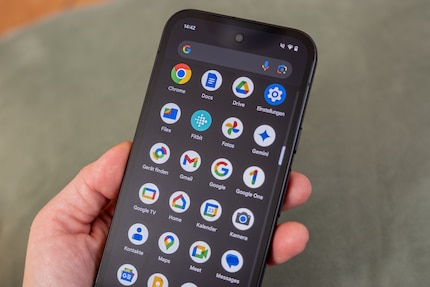
Google’s increasingly leveraging AI features and – in addition to its Gemini assistant – also offers image editing and translation. One of my favourite features is Google’s «Now Playing». It also runs on the lock screen and detects music currently playing nearby. This works via an internally stored database, so the phone doesn’t have to send anything to Google. I can then save my favourite tracks to a YouTube playlist with just a tap. Love it!
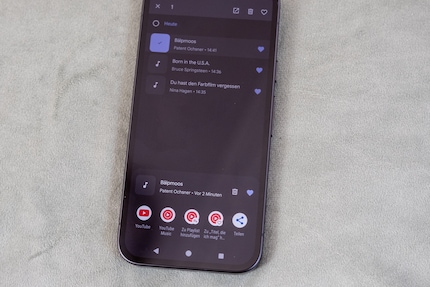
In a nutshell
All you need
The Google Pixel 9a doesn’t lack anything in everyday life. It responds quickly, has practical AI features, and the battery lasts even on long days. When gaming, I don’t have to go without good graphics. I also really like the photos. The only thing I might find lacking is the RAM, given current AI developments. No optical zoom could also be an issue, but the digital zoom works well.
Otherwise, the Pixel 9a’s a durable, solid phone – Google also provides it with seven years of software and system updates. I think 500 francs or 550 euros is a fair price for that. However, last year’s flagship Pixel 8 currently costs the same. Last year’s Tensor G3 keeps up well with the current chip, and you get an optical zoom for photography with the Pixel 8. The Xiaomi 14T Pro is also in this price segment and [offers even more performance](/page/xiaomi-14t-pro-im-test-zurueck-zum-alten-preis-leistungs-verhaeltnis-35508 .
If you’re in urgent need of a new device and want to save a bit, you can easily go for last year’s model. The Pixel 8a currently costs 350 Swiss francs or 400 euros in Germany and has hardly any weaknesses. I even think its design’s more iconic and easier to handle. And you’ll still get six years of updates.
Pro
- Solid overall package
- Seven years of software and security updates
- Long battery life
- Good photos
Contra
- No optical zoom
- Limited RAM

In my world, Super Mario chases Stormtroopers with a unicorn and Harley Quinn mixes cocktails for Eddie and Peter at the beach bar. Wherever I can live out my creativity, my fingers tingle. Or maybe it's because nothing flows through my veins but chocolate, glitter and coffee.
These articles might also interest you

Product test
Google Pixel 10 Pro Fold review: the most versatile member of the family
by Michelle Brändle

Product test
The Google Pixel 10 Pro is just good – no frills, no fuss
by Michelle Brändle

Product test
Google Pixel 10 review: a mischievous look at a quantum leap in smartphone tech
by Michelle Brändle
